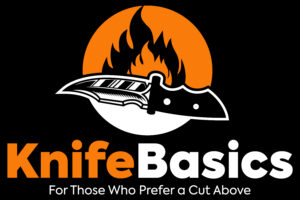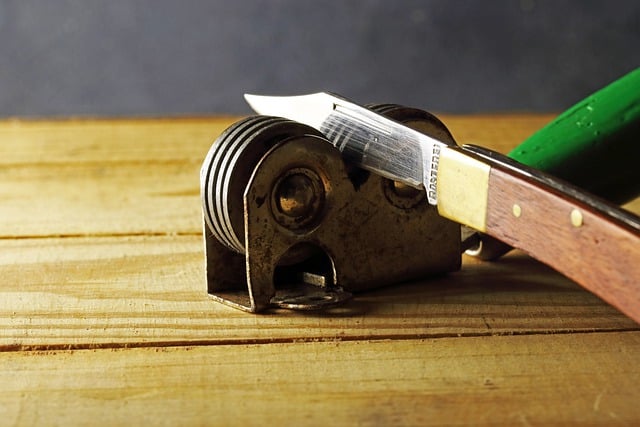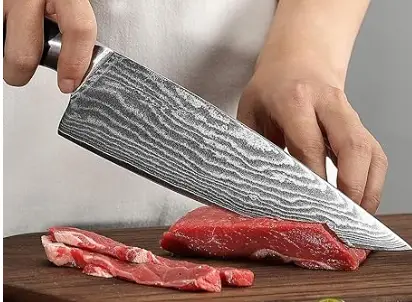One of the main things to consider when buying a folding knife is the locking mechanism. There are several locking mechanisms, but liner lock and frame lock are the most common for pocket knives.
Each locking mechanism has its pros and cons making them suitable for different needs. In this article, we will look at the differences between liner locks and frame locks in addition to their pros and cons to help you choose the best depending on your needs and preferences.
Liner lock
The liner lock mechanism was invented in the late 19th century, and it is among the most common locks in folding knives and pocket knives today. It is characterized by a spring bar (liner) on the side of the blade’s sharp edge.
When closed, the spring bar is held in position under tension as it is bent inwards. Once you open the knife, the tension pushes the bar (liner) inwards and comes into contact with the blade’s tang end, which keeps it in place, preventing it from closing.
To close the knife from this position, you must apply manual force to push the liner towards the scale, allowing the blade to fold back into position manually.
A liner lock has seen updates and variations by different knife companies, each giving it a fancy name, but the concept remains the same. Kershaw, for example, has an inset liner lock aimed at reducing weight.
Micheal Walker Liner lock, arguably the most popular and best variation so far, features a detent ball inside the liner mechanism that gives the blade smooth movement.
It allows the blade to be held at a single point, and when fully closed, the ball falls into a tiny hole drilled in the blade.
Spyderco has its own type of liner lock variation, commonly seen as an inverted liner lock called a compression lock.
Are liner locks safe?
Yes, liner lock knives are very safe to use and carry. A liner lock mechanism is a proven concept used in thousands of folding knives. A liner lock knife will not open itself while in carrying unless you do it manually.
The liner bar is always strong enough not to allow the knife to fold back when in use unless manually released. If you need a much stronger folding knife, you can get the frame lock instead, which is similar to a liner lock.
Pros of liner lock
- Allows the knives to have two handle sides
- Used in both high end and entry-level knives
- The lock is appealing to both new knife users and enthusiasts
- You can close the knife with one hand
Cons of liner lock
- Liner locks are not strong enough to handle heavy-duty tasks
- Prone to wear because they are made with thin metal pieces
Frame lock
A frame lock mechanism is pretty similar to a liner lock. AFrame lock uses part of the knife handle as a lock. Frame locks are stronger than liner locks because the handle is mostly a thicker metal.
One side of the frame has a cut in the middle. The cut metal has been bent inwards to snap right in when the blade is opened, holding the tang end into position.
Closing the frame lock follows the same procedure as the liner lock, whereby you apply pressure to push the frame from the blade. When open, the handle is forced to snap on the blade by the pressure from the lock.
Pros of Frame Lock
- Frame locks provide a strong lockup making the knives suitable for heavy-duty tasks like cutting and piercing.
- You can operate the knife with a single hand
- It gives the knives a unique look
- They do not wear out quickly because they are made from thick metal
Cons of Frame Lock
- Primarily found in mid-range to high-end knives
- If there is an error in matching the angle of the blade with the lock, the lock may not engage at the furthest, which reduces the knife’s effectiveness.
Difference between liner lock and frame lock
- Knives with Liner locks use a spring bar, while frame locks use part of the knife handle as the lock.
- Liner locks are made with thin pieces of metal, whereas frame locks are made with thick metals and therefore offer more robust locking.
- Liner locks allow the knife to have two sides, while knives with frame lock only have one side because the other side operates as the locking mechanism.
- Liner locks are susceptible to wear, and they break easily, while frame locks are strong and last for a long time.
Factors to consider when buying liner and frame lock knives
Choosing between knives with liner locks or frame locks can be challenging. Follow the tips to make the right decision:
Material of the handle
As mentioned above, frame locks use part of the handle as the lock. Therefore, the material used to make the handle determines its effectiveness.
Ensure that the handle is made from a thick and robust material. Titanium frame locks are always strong and extremely durable. On the other hand, consider the material used to make the liner in a liner lock such that it shouldn’t be so thin to slip back to the frame.
Purpose of the knife
If you are buying knives for robust tasks, consider knives with frame locks because they are made from thick metals, making them stronger. On the other hand, Liner locks are suitable for simple tasks because they do not have the strength to handle difficult tasks.
Ease of cleaning
The strength of the locks is determined by the friction between the handle or the spring bar and the blade. The friction is affected by dirt and lubrication; therefore, purchase a knife that is easy to clean.
Frame lock vs Liner lock Which is better?
Both frame and liner locks are safe to use and will serve their purposes excellently. The choice between the two should depend on the application. A frame lock is better than a liner lock for tougher applications as it is more robust.
A liner lock is better than a frame lock in opening and accessibility. The variations of liner lock, particularly the Michael Walker liner lock, allow for quick one-handed opening and closing. A frame lock is much stiffer due to the strong handle in construction.
In terms of safety, both are safe to use and carry; however, one might argue that a frame lock is much safer during use. When opened, your hand grip forces the frame to lock in position hence minimal chance of the blade falling back into the closed position.
Both locking mechanisms provide the challenge of your finger being in the way of the blade when closing the knife, which is the main course of concern with these locking mechanisms.
Conclusion
Both liner lock and frame lock operate on a similar mechanism. Both are safe and have been proven to be effective owing to their large uptake in folding knives. Both will offer similar performance only that a frame lock will be much suitable for demanding tasks as it’s stronger.



